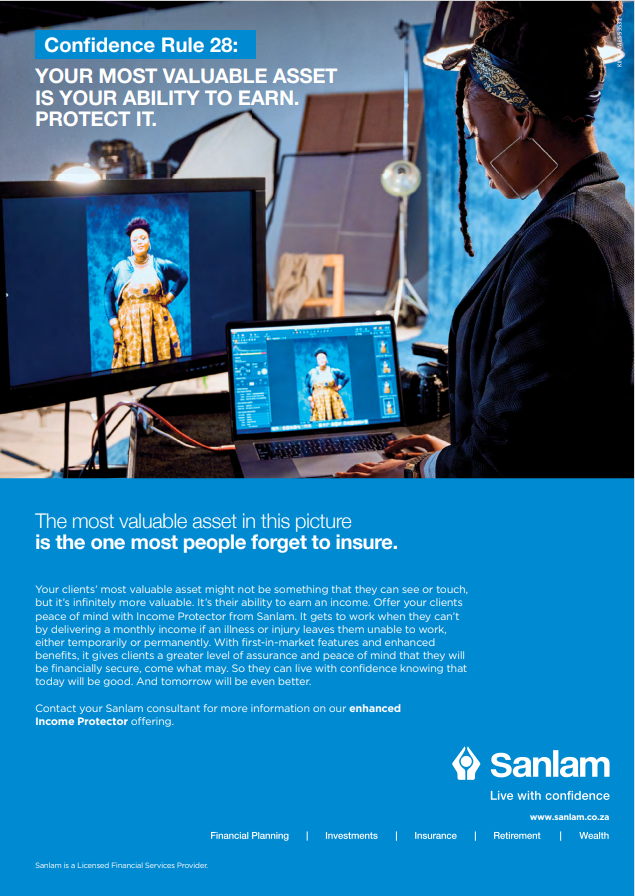
Henning Haagen, Board Member and Chief Regions & Markets Officer for Mediterranean & Africa at Allianz Global Corporate & Specialty
The Covid-19 pandemic is one of the deadliest events in recent times that has contributed to the largest economic loss results in history for companies and insurers alike.
Companies and even entire sectors suffered large business and supply chain interruption events as a result of the pandemic which hit our modern, globalised and interconnected economy. The pandemic demonstrated just how vulnerable the world and businesses are to unpredictable multi-country events but also opened up new opportunities in digitalization: This has significantly changed the risk landscape for clients and society as well as the way corporate insurance operates.
Major changes
With the Coronavirus crisis, a new corporate risk landscape has emerged: Fire, explosion, natural catastrophes, cyber, and political violence have been in the forefront of the top risks that businesses have been grappling with over the last few years but in 2020, pandemic risk re-emerged, creating even more disruptive scenarios for businesses globally.
As the world was plunged into global lockdown, in a truly unprecedented manner, the pandemic led to large-scale business closures and supply chain disruption globally and brought tourism and aviation industries to an abrupt halt. Covid-19 increased social inequalities and racial disparities contributing to looting and riots in some countries.
Cyber exposures for companies increased, too. Pushing digitalization and remote working, the pandemic created a fertile ground for criminals seeking to exploit the crisis, with ransomware attacks soaring. The total number of reported ransomware incidents increased by 12% between 2019 and end of 2020 to more than 500,000(1). Cybercrime now costs the global economy over $1trn – more than 1% of global GDP – up 50% from two years ago(2).
Standards in risk management and business continuity planning need to evolve
Against the backdrop of this new risk environment, the pandemic has shown us the limitations of approaches that were previously considered robust. Risk management and business continuity management (BCM) needs to further evolve to be more holistic, cross-functional and dynamic to help businesses prepare for and survive extreme loss scenarios. In an increasingly interconnected world, businesses have to also ready themselves for more frequent extreme scenarios, such as a global-scale cloud outage or cyber-attack, natural disasters driven by climate change or even another disease outbreak.
The business interruption has become a discussion not just for risk professionals but for corporate boards to build more resilient operations. According to risk experts contributing to the Allianz Risk Barometer 2021(3), “initiating or improving business continuity management” (62%) is the main action companies are now taking in order to make them more resilient in the face of the global pandemic. We are seeing clients make changes including near-shoring (bringing production to a nearby country) and some re-shoring and changing the locations of supplies, particularly for US companies. Companies are increasingly thinking about the consequences of events like natural catastrophes and civil unrest, and how quickly they will be able to find alternative suppliers.
Post-pandemic, a lot of work remains to be done on business continuity and business resilience, reflecting the lessons of the last 18 months. In order to manage the risks and develop solutions, businesses need to clearly define their specific situation, with accurate data on operational exposures and risks which can be analyzed to create a more accurate picture of their risk profiles – and which then can inform the best approach to risk mitigation. This should extend beyond the well-established primary insurable risks such as fire, flood, or explosion to cover a wider range of scenarios including contingent business interruption in supply chains or intangible assets such as brand and reputation.
Accelerating digitalization in Underwriting and Claims
The pandemic saw accelerated digitalization in client interactions – literally the first round of 100% virtual renewals in 2020. We observed strong commitment from our clients, brokers and service partners to make it happen. We also introduced new formats of digital customer interaction – be it virtual client events, broker workshops or even socializing through digital wine tasting – formats that will be here to stay in the post-pandemic new normal of work and create additional touchpoints with customers besides face-to-face meetings. AGCS and many of its clients will move to hybrid working models combining remote and office-based working, so it will be a blend of digital interaction and personal meetings going forward.
Covid-19 reinforced the need and urgency for digitalization of claims handling. Remote claims inspections and loss adjusting for physical damage events or major industry accidents are now possible through satellite, drone or image capture technology. Just a few years ago, claims processes were mostly manual and paper-based procedures and many clients could not have imagined handling claims remotely. This, together with a strong collaborative approach from our clients and brokers, has enabled our claims teams to handle the surge of claims received in 2020 and deliver expert service, all while working remotely.
While we all have improved our digital savviness during the pandemic there is still some way to go for corporate insurance to move to truly digital business models, consolidate legacy systems into new platforms, and leverage data and technology in order to become more effective and faster for better customer experience.
The pandemic made remote surveys and risk consulting the new norm
We also digitalized our approach to risk consulting and on-site loss prevention surveys. Since 2019 we have done 430 remote risk assessments in the Mediterranean & Africa region. The 60% increase in 202 is as a result of travel restrictions in the region and greater acceptance among clients for remote assessments. All lines of business are focusing on remote assessments with big contributions from Property (75%) and Marine (20%).
How do remote risk assessments work? Our risk consultants upload questionnaires and instructions on platforms such as MirrorMe or Microsoft Teams, where a plant manager can respond with photos, videos, documents or text comments of the process, storage areas, utilities, fire protection and other control systems, and business continuation for our risk engineer to analyze, rate and benchmark against the relevant risk categories, and offer recommendations to mitigate these risks. A follow up call or live video of a site walk through is often required to validate and clarify information, which allows for some measure of interaction with the client.
The pandemic has made remote risk surveys crucial in the industry and we have seen efficiency gains as a result. Onsite surveys which usually took about a week (including travel) can now be done in a few days and for smaller sites, in a few hours. We also saw more engagement from our clients ‘senior management, which expedited decision making for recommendations on exposure controls.
Remote assessments are here to stay but as enabling as technology is, one thing is still clear – no tool will ever be able to completely replace an in-person visit to establish the human connection and assess the holistic risk (with loss estimations), particularly for a first visit or to more complex occupancies.
In general, we supported our customers with safety risks guidance and observed a very professional ‘care and caution’ approach of our business customers to manage temporary closures and the – often tricky and loss-prone – restarting phase of their operations and facilities or the reactivation of hibernated aircraft or vessels. The entertainment and sports industry reacted quickly in developing mitigation measures that allowed the film industry to resume shooting with specific health and safety measures or the sports industry in continuing competitions without spectators or live events being streamed virtually.
The need for coverage certainty and to create new solutions for systemic risks
Corporate insurers have been notified of thousands of Covid-19 claims for business interruption and closures following governmental shutdown orders. These claims were settled quickly where coverage was confirmed. Nonetheless, property insurance is intended to cover physical damage, and non-damage business interruption caused by Covid-19 would not typically be insured. This has brought up some challenges in terms of coverage and there have indeed been grey areas, so we have had to work with brokers and customers to explain the situation and clarify the terms of the insurance. In some countries, such as South Africa, courts have been called upon to clarify the interpretation of wordings. Upon renewal, insurance conditions have been made more precise so that in the future it will be more clearly recognizable what can and cannot be insured for communicable diseases.
On a more fundamental level, Covid-19 has exposed the limits of (private) insurability when it comes to systemic risks. Other risks, such as natural catastrophes and cyber-crime have the potential to be the next black swan event to also reach systemic dimensions. This means that the industry should use this as an opportunity to forge new private-public partnerships, which is something Allianz has been proposing. Initiatives for governmental backstop solutions are well underway in many countries.
A Post Covid-19 landscape brings opportunities for growth and innovation
According to the latest Allianz Global Insurance Report(4), the insurance industry weathered the Covid-19 storm with solid resilience – despite a significant claims burden. The post-Covid-19 landscape will open up new opportunities as growth is expected for both the global economy and the insurance industry.
Businesses and governments have been forced to reset, rethink their reform agendas and business models and improve their resilience striving for more robust digital operations and supply chains. The crisis has also increased the demands and expectations of our corporate clients. For the insurance industry, this means a profound transformation, away from a pure product logic and toward a holistic value proposition that focuses not only on financial compensation but also on the management and prevention of risks as well as claims and crisis management services.
The pandemic has accelerated the industry’s digital transformation by at least five years—forcing incumbents to open or enhance digital distribution channels and to make corresponding upgrades to back-office capabilities. Insurtech investments have reached an all-time high. The demand for digital solutions is increasing across the insurance value chain, from quote issuance to claim settlement. As insurers, we are expected to accelerate our digital transformation, rapidly increasing technology capabilities for the benefit of improved customer experience.
While we have highlighted many potential scenarios, only time will tell how trends play out. The fact that Covid-19 will have a lasting impact and change the way we view the world is inevitable. It was and is a steep learning curve for all of us and so let’s continue learning and leveraging the insights for the new normal – or as some say – for the new better.
Source
- The cost of ransomware in 2021: A country-by-country analysis, April 27, 2021
2. McAfee and the Center for Strategic and International Studies, The Hidden Costs of Cybercrime, December 7, 2020
3. 10th Allianz Risk Barometer 2021, January 19, 2021
4. Allianz Global Insurance Report – Insurance Outlook 2021: A year of new opportunities, May 21, 2021


